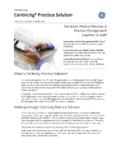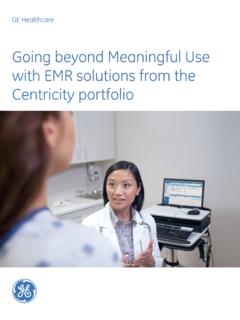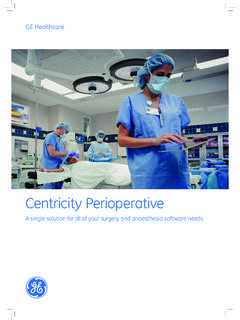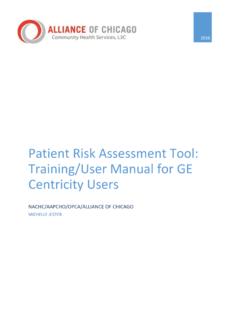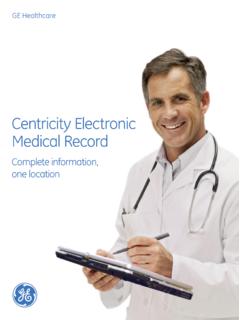Transcription of The Path to Patient Centricity Closing the 'How' Gap
1 The Path to Patient CentricityClosing the 'How' GapGareth Phillips Ipsos John Elliott The Aurora Project/ExcellerateAugust 2018 In Memory of Jack WhelanThe need to more effectively serve patients hit close to home this past year as our survey co-lead, Jack Whelan a passionate Patient advocate sadly passed away from his battle with cancer before its completion. We scheduled our survey planning meetings around Jack s cancer treatments. His passion as a Patient advocate inspired all of those he Lode Dewulf, the remaining co-lead on the project, We have dedicated the 2nd Annual Survey to Jack s memory.
2 HOW patients FOUND THEIR VOICEThe fundamental business model of the pharmaceutical industry has remained relatively unchanged since its early roots in chemistry 150 years ago. It is one based on innovation in medical discovery and commercialization, and it has always been quintessentially molecule-focused. Over the past 20 years, the most significant change to that century-old model has been the rise in the power of payors and the need to reconcile the cost of innovation with the willingness and ability to pay for (new) medicines.
3 However, we believe that an even more fundamental shift has now taken place within the healthcare environment: the rise in the power and engagement of patients in their own care. The forces that have given patients their voice are manifold:The rise in chronic diseases and their treatments: It is no secret that both an ageing population and the global rise in chronic diseases are placing enormous pressure on healthcare systems. Paradoxically with chronic disease, although more healthcare providers are involved in Patient care, the Patient is the most important member of the healthcare team.
4 For example, a diabetic Patient may have the best care team and medicines in the world, but it is the modification of their own behavior that will help drive favorable outcomes. As such, there is an increasing proportion of patients who have become active stakeholders in their own explosion of medical knowledge and technology: Over the last hundred years, and especially in the past twenty, healthcare has evolved at warp speed. Medical knowledge is growing exponentially, driven in large part by technology whose growth is also exponential.
5 This acceleration of science and technology has driven significant improvements in quality and expectancy of life around the world. However, the explosion of knowledge has also created an implementation gap, with some healthcare providers 2018 to know and apply all advances in medicine. patients have stepped in to help close that gap in their motivation to receive optimum of social sharing and interaction: Social sharing is a catalyst for Patient empowerment. Where once, information on the effectiveness of treatments was the exclusive domain of healthcare providers, now more of this information is available to patients to help solve their unique health problems.
6 online Patient communities focusing on specific diseases can help patients to identify treatment options and arm them with information that they can use and/or bring to their healthcare at the centre of healthcare systems: Gone are the days when there was one doctor from whom we would accept all diagnoses and treatments. For decades, healthcare was system-centric, designed to optimize internal health system efficiencies and metrics. Today, care is delivered by a myriad of healthcare providers with varying degrees of system co-ordination.
7 This has given rise to the need for patients to be more knowledgeable about their disease(s) and active in the coordination of their care. Consumerization of healthcare Patient as payor: Due to systemic financial pressures, governments and payors are increasingly focused on extracting the most value for their money. In this context, many treatments are not being paid for by public and private health plans. patients in certain self-pay markets such as the US must often fund the latest health innovations from their own pockets.
8 Meanwhile, an abundance of new technologies have been developed to enable consumers to better control their own healthcare be it through education, disease monitoring, Patient -generated data analysis or even treatment delivery. Patient Centricity is about creating a culture in the organization where you first and foremost think about what s going to add value for the Platford, President, Europe and Canada, Takeda PharmaceuticalClearly, there is both a need for Patient - Centricity , and an appetite for it among those best placed to make it happen.
9 The question that remains for pharma companies is how best to be Patient -centric?PHARMA S (R)EVOLUTIONAs a result of the growing role of the Patient , there is an increasing imperative for the pharmaceutical industry to shift from a product focus to a Patient focus, and adopt more Patient -centric business structures and processes. Patient Centricity is now not only well documented in corporate visions and missions, it is at the top of many pharmaceutical company agendas as illustrated by the following comments:In every part of our organization and in every part of the world, our work continues to be driven by an unwavering commitment to the people at the center of everything we do our patients and their Caforio, , Chief Executive Officer, BMSQ uote extracted from Bristol Myers Squibb 2017 Company Overview, page 201 Harnessing scientific excellence to improve patients lives and, where possible, help them live longer, is the goal that drives us day in and day out at Severin Schwan, Chief Executive Officer.
10 RocheQuote extracted from Roche 2016 CEO sshareholder letter, page 2202I want to bring the Patient journey to another level and make it more holistic beyond the medicine and therapy. What else can we help patients with? What are all the touchpoints where we could be a tremendous help to patients ?Christi Shaw, Senior VP Eli Lilly and Command President of the Biomedicines Business Unit 2018 Patient CENTRIC ARE WE R E A L LY ? In their seminal 2016 White Paper Patient -Centric Profitability: Pharma s Global Survey & Analysis 03 Paul Simms (Chairman of eyeforpharma) and Jill Donahue (MD of Excellerate) discuss a survey conducted by The Aurora Project, a non-profit group which they co-founded to move Patient Centricity from words to actions and outcomes.











